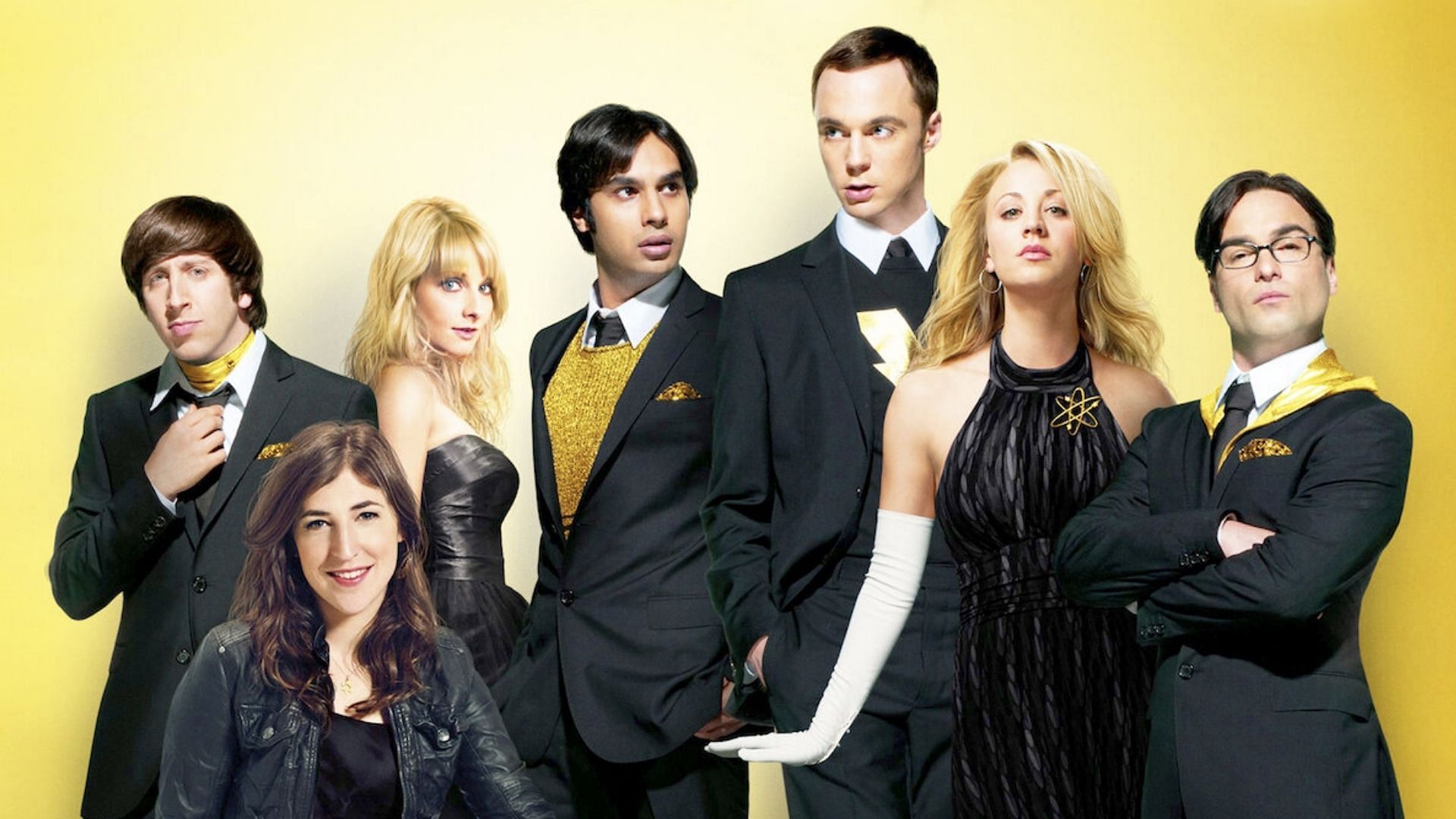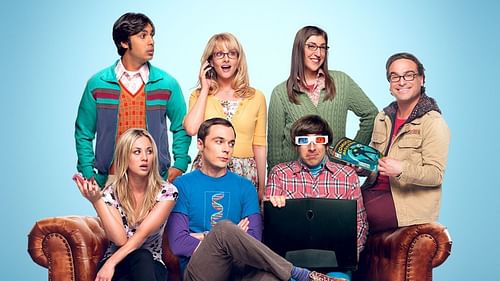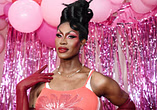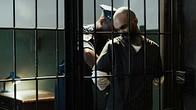7 inaccurate details in The Big Bang Theory that even nerds missed

The Big Bang Theory debuted on CBS in September 2007 and quickly became a ratings hit, thanks to its mix of sharp one-liners and rapid-fire physics jokes.
Created by Chuck Lorre and Bill Prady, the sitcom centers on Caltech roommates Sheldon Cooper (Jim Parsons) and Leonard Hofstadter (Johnny Galecki). They're joined by engineer Howard Wolowitz (Simon Helberg), astrophysicist Raj Koothrappali (Kunal Nayyar), and their neighbor Penny (Kaley Cuoco), an aspiring actress.
Over twelve seasons, the group navigates comic conventions, career milestones, and complicated relationships—often while scribbling complex equations on whiteboards.
While The Big Bang Theory saturates its scripts with genuine equations and references to Nobel laureates, it occasionally distorts facts for the sake of punchlines. Even eagle-eyed spectators, who take great satisfaction in discovering mistakes behind catchphrases, often miss subtle errors that occur amidst the laughter.
The seven points below spotlight inaccuracies—scientific, technical, and continuity-related—that slipped past both casual fans and many self-styled nerds.
Some inaccurate details in The Big Bang Theory
1) The Doppler-effect explanation

The Big Bang Theory season 1's Halloween episode (The Middle-Earth Paradigm) features Sheldon dressed in a black-and-white striped costume representing the Doppler effect. He explains to Penny that as a sound source approaches, its pitch (frequency) increases, and as it moves away, the pitch decreases.
His exact line is, “I’m the Doppler effect. If I were moving, the pitch of my voice would change as I passed by.” While the joke resonates, it simplifies the science. Sheldon accurately describes the basic idea that the spacing of waves changes depending on the motion of the source.
However, he omits a key detail—the perceived frequency shift also depends on the motion of the observer. The full Doppler effect formula accounts for both source and observer velocities. For example, a stationary listener hears a change in pitch only if the source is moving. But if both are moving—or if the observer moves toward a stationary source—the perceived frequency changes as well.
2) Bilbo's dagger has a name

In The Big Bang Theory season 5 episode The Russian Rocket Reaction, Sheldon and Leonard are browsing their favorite comic book store when Sheldon nearly buys Jon Snow’s sword, Longclaw. Leonard stops him, pointing out that they have overlooked another replica: Bilbo Baggins’ dagger. He casually refers to it as “Bilbo’s dagger from The Hobbit,” adding that carrying it around would make them look foolish.
Ironically, the real blunder lies in Leonard’s line. Any true Lord of the Rings or Hobbit fan—especially someone as nerdy as Leonard—would know that Bilbo’s “dagger” has a name: Sting. The Elvish blade, forged in Gondolin, glows blue in the presence of orcs. It's far more iconic than Leonard gives it credit for, and calling it just a “dagger” feels like an out-of-character oversight.
For a show that prides itself on geeky accuracy, this slip-up stands out to Tolkien fans.
3) Getting a Nobel Prize is a long process

In The Big Bang Theory episode The Confirmation Polarization, Sheldon and Amy are ecstatic after publishing their Super Asymmetry theory—so much so that they begin dreaming of winning a Nobel Prize. They meet with two scientists from Fermilab who are eager to join the project, hoping to secure a share of the potential award by pushing Amy out.
However, this storyline significantly deviates from how the Nobel Prize process actually works. For one, a newly published paper wouldn’t be eligible for the prize so quickly.
According to the official Nobel Prize guidelines, the nomination process takes months of review. It usually begins in September, with nominations due by January 31 the following year, followed by extensive scrutiny lasting up to eight more months. This means a theory wouldn’t be considered for a Nobel right after publication.
Additionally, the idea that a single scientist could simply "overlook" or "approve" the paper’s validity for Nobel consideration is misleading. In reality, the review process involves multiple experts and layers of validation. The show simplifies a highly rigorous and slow-moving system for dramatic effect—something most casual viewers wouldn’t catch, but science-savvy fans found hard to ignore.
4) The International Space Station toilet has no gravity drain

In The Big Bang Theory season 6 episode The Bakersfield Expedition, Howard boasts about his work on the International Space Station's toilet system, claiming it “uses centrifugal force to pull… stuff… down and away.” It’s a humorous line that conjures chaotic visuals of spinning waste in zero gravity—but that's not how space toilets actually work.
In reality, the ISS uses a carefully engineered air suction system. Since there’s no gravity in orbit to direct waste "down," fans create airflow that guides liquid and solid waste into the appropriate receptacles. Solids are stored in sealed bags for eventual disposal, while liquids can be filtered and recycled into drinking water.
Centrifugal force-based systems were considered in early conceptual designs—like NASA's Skylab-era sketches—but were ultimately deemed too mechanically complex, power-intensive, and failure-prone for long missions.
The Big Bang Theory tweaks the science here for comedic effect, imagining Howard as a hapless engineer behind a potential space-faring disaster.
5) Raj’s selective mutism

In the early seasons of The Big Bang Theory, Raj’s defining quirk is his inability to speak to women unless he’s under the influence of alcohol—a condition referred to in the show as “selective mutism.” This trait is consistently portrayed at first. In season 2’s The Griffin Equivalency, for example, Raj only manages to speak to actress Summer Glau after sipping beer.
However, the consistency begins to unravel by season 4. In The Thespian Catalyst, Raj has a full conversation with Siri, Apple's female-voiced virtual assistant, without any indication that he's been drinking. Given the show’s established rule, Siri’s female voice should trigger his silence—but it doesn’t.
This shift highlights a broader trend in sitcom writing: quirks are often adjusted to suit punchlines rather than psychological continuity. While fans rarely call out the inconsistency—accepting that sitcom characters evolve—mental health experts would point out that recovering from social anxiety or phobic mutism typically involves gradual exposure or therapy.
6) Howard wouldn't qualify for space travel

Howard Wolowitz's title as an astronaut is one of the most surprising—and funniest—turns in The Big Bang Theory. Fans familiar with NASA's strict criteria know it's highly improbable that someone like Howard would ever pass the screening procedure, even though it accentuates the pride (and vanity) of his character.
In the show, Howard is shown as having various health issues that would prohibit him from actual space flight. He has motion sickness, asthma, and idiopathic arrhythmia—a cardiac disease usually requiring close medical attention. Because of their high protein and calorie count, nuts are also sometimes included in astronauts' diets, but he is allergic to them.
Combined with his physical restrictions and the comedic struggles he faces during NASA's training program, it is evident that he would not survive the actual selection procedure.
In reality, NASA astronauts have to pass psychological, physical, and endurance exams, as well as others. To be ready for even brief missions, candidates train for years. Howard's medical background alone would have kept him grounded even if the program parodies his space trip.
7) Sheldon's age doesn't quite add up

For a show centered on geniuses, The Big Bang Theory presents an interesting mathematical inconsistency when it comes to Sheldon's age.
In season 1's The Luminous Fish Effect, Sheldon claims he spent three and a half years researching, four years writing his thesis, and then attended college, and before that, fifth grade. Based on that timeline, he would have been around 22 or 23 when the series debuted in 2007.
However, earlier The Big Bang Theory episodes point to otherwise. A DMV scene shows Sheldon's birthdate as February 26, 1980, which would make him 27 in season 1. Later, in season 10's The Birthday Synchronicity, he says he is turning 37 in 2016, implying a 1979 birth year.
This contradiction likely stems from the writers changing elements to match changing storylines—especially Sheldon's faster learning. Although the show's crew reportedly used spreadsheets to monitor character information, consistency mistakes still happened, especially when the narrative took center stage over exact timing.
The Big Bang Theory is available for online streaming on Netflix, HBO, Apple TV, and Amazon Prime Video.




